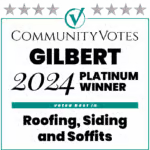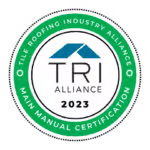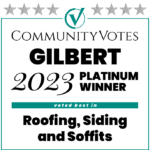A Mesa AZ Siding Company
The Trusted Siding Contractors in the East Valley
As a trusted siding contractor in Mesa and Gilbert, we understand that your home’s siding is more than just curb appeal—it protects against Arizona’s intense desert sun, extreme heat, UV fading, and sudden monsoon winds while improving energy efficiency to keep cooling costs down. That’s why our experienced team at this local East Valley siding company personally guides you in choosing durable materials and styles perfectly suited to your home.
We specialize in professional installation and repair of all types of siding, including stone veneer, stucco, windows, soffit, and fascia. We’ll thoroughly evaluate why your current siding might be failing—whether from sun-induced cracking and fading, heat warping, monsoon moisture intrusion, or dust buildup—and recommend the most advanced, proven products and techniques to ensure your new siding thrives in the Valley’s demanding climate.
With our background in custom home building, our crew excels at detailed and complex projects, delivering precise, premium craftsmanship every time. We also stand behind our work with a strong 10-year installation warranty, on top of the manufacturer’s product warranty, for total confidence and peace of mind.

Our Siding Services in The East Valley
Siding Repair
Siding Replacement
Siding Options For Your Home
James Hardie
Discover the timeless beauty and unmatched resilience of James Hardie® fiber cement siding. Featuring factory-applied ColorPlus® Technology finishes for vibrant, fade-resistant color that stands strong against Arizona’s relentless sun and intense UV rays, keeping your home looking fresh year after year with minimal maintenance.
LP SmartSide
Built tough with LP’s exclusive SmartGuard® zinc borate treatment throughout every strand, it resists termites, fungal decay, and extreme temperature expansion, preventing warping, cracking, or splitting even under Arizona’s blazing summer heat and rapid cool-downs. It also shrugs off impact from flying debris during monsoon winds better than many traditional materials, delivering reliable, long-term protection for Valley homes.
See all your siding options on their website before you start!
Stone Veneer
Stone veneer siding is engineered for long-lasting performance. It stands up well to Arizona’s intense sun, monsoon storms, and extreme heat, protecting your home while enhancing its architectural detail. With a wide variety of colors, shapes, and textures available, you can customize the perfect desert-inspired look, from rugged Southwest style to clean and modern designs.
Steel Siding
Whether you’re building a new home or replacing outdated siding in Gilbert, choosing the right material is a big decision. If you look around established neighborhoods with homes over 30 years old, you’ll often see steel siding still standing strong. Known for its exceptional durability against intense sun, monsoon winds, and extreme temperature swings, steel siding is one of the best long-term values you can add to your Arizona home.
Answer All Your Residential Siding Questions
Some signs its time for new siding include:
1. Visible cracks, holes, or breaks in the siding.
2. Warping or bubbling in the siding panels which could lead to failure.
3. Rot, mold, mildew, or fungus growth on your siding.
4. Interior signs of moisture like peeling or bubbling paint on your walls.
5. Higher energy bills due to faulty sealing and lost heat.
There are several factors that play a role in the longevity of your home’s siding. Things like sun resistance, quality installation, and material choice can all change how long your siding remains looking new.
Our crew prefers the products from James Hardie® and LP® SmartSide® because of their superior hail resistance and product warranties giving our customers peace of mind.
In our expert opinion, the quality and versatility of James Hardie® and LP® SmartSide® can’t be beat. Both are engineered to perform in the Arizona heat and wind. Our siding team can help you select the best fit for your home to ensure lasting quality and appearance.
Yes! We always provide a detailed written estimate outlining the scope of work, materials, timeline, and pricing before any work begins.
You can schedule an inspection by calling us directly or submitting a Contact Form. We offer free inspections with no obligation.
Yes! We offer warranties on both materials and labor. The warranty length depends on the siding material and manufacturer, and we’ll provide all warranty details before starting the project.
Absolutely! New siding, properly installed by experts, can seal out drafts and help your furnace run more efficiently.
Depending on the size of your home, a typical siding replacement job from tear off to install, will last about 2 weeks.
Yes. In most cases, replacing your siding before selling is one of the smartest exterior upgrades you can make. It delivers strong curb appeal, helps your home stand out in a competitive market.
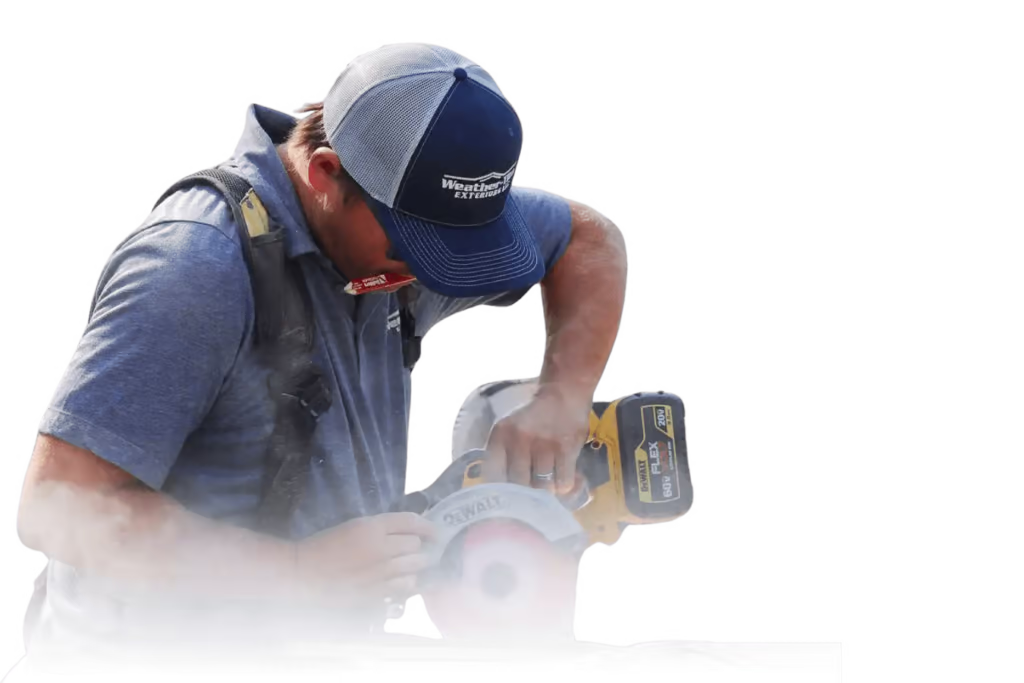
Partner with The Most Experienced Siding Contractors in Arizona
Weather-Tite Exteriors is Mesa’s go-to contractor for Residential Roofing, Commercial Roofing, and Siding. Trust the best in Arizona with your next project!
Contact us today at (602) 654-0067 to schedule your free inspection and receive a no-obligation quote.





